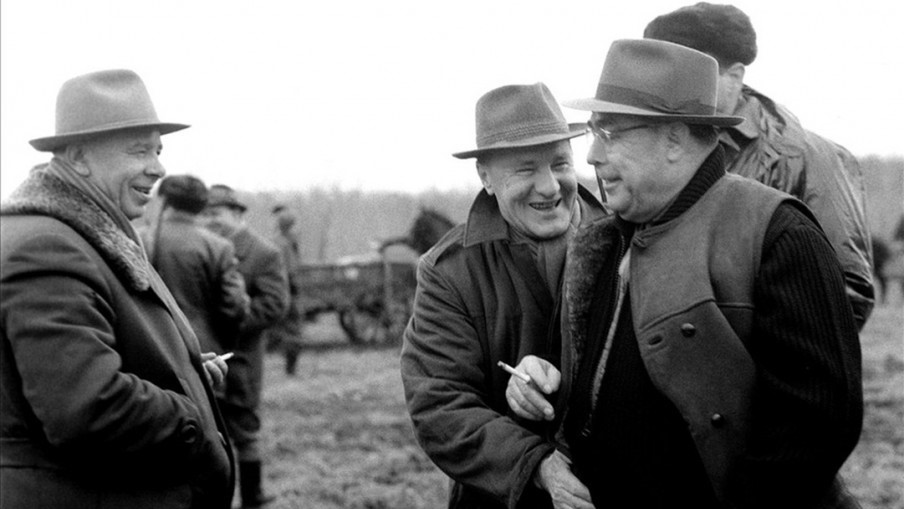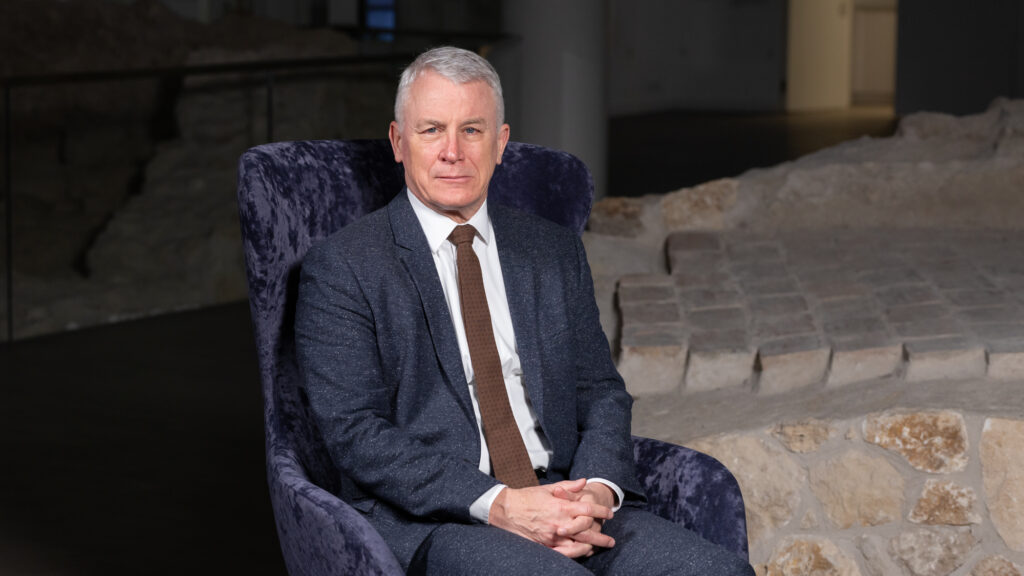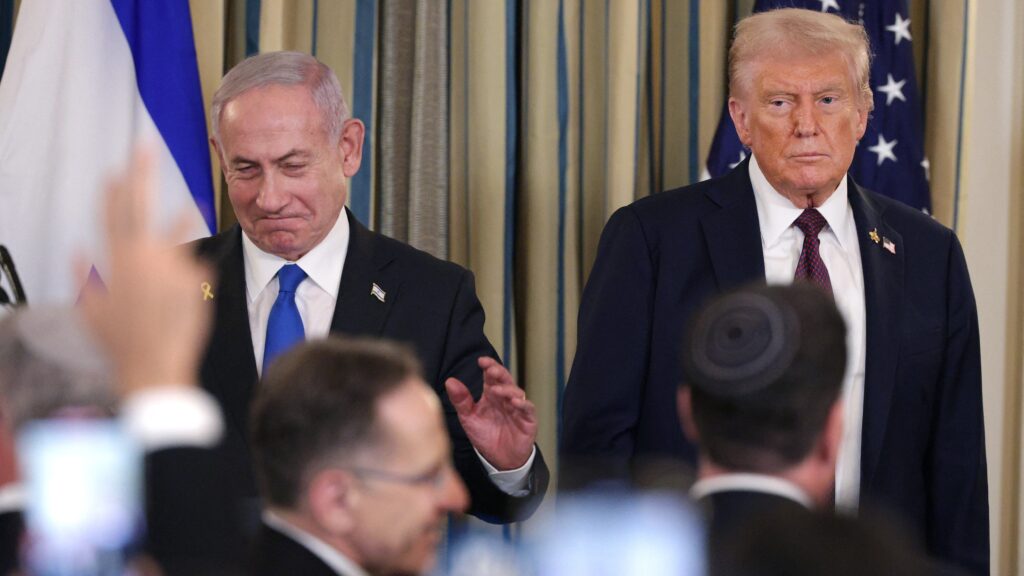During the Cold War Hungary maintained diplomatic relations with Israel until the 1967 Six-Day War. The situation of diplomats stationed at the embassy in Tel Aviv provided ideal opportunities for operating an intelligence station (‘rezidentúra’), as diplomats enjoyed immunity and could communicate freely with their government. The intelligence station was maintained by Office I of the Directorate III of the Ministry of Interior (the department responsible for foreign political and economic intelligence), which repeatedly studied and attempted to recruit Israeli citizens—primarily those of Hungarian origin.
One of their ‘targets’ was Rabbi Ottó Komlós, who at the time was an employee of the Yad Vashem Holocaust Museum. This article reveals the (brief) history of his attempted recruitment by the Hungarian state security agency. This article does not have the ambition to identify who were working for the Hungarian Communist security services at the Tel Aviv embassy at the time; it focuses solely on the documents related to the observing and mapping of Komlós and the short-lived and fruitless attempts to infiltrate Yad Vashem.
From Hungary to Israel and the US
Ottó Komlós was born on 1 December 1913, in Mágocs, Baranya County. He earned his rabbinical diploma in 1940 at the Rabbinical Seminary in Budapest. Between 1947 and 1948 he served as a rabbi in Székesfehérvár, and from 1949 to 1957 he held the same position at the synagogue on Bocskai Road in Lágymányos, Budapest. His wife, Julianna Polacsek, who was sixteen years his junior, made aliyah in 1956, and Komlós followed her a year later. From 1959 to 1967 Komlós headed the Hungarian department at Yad Vashem, while also lecturing at several universities, including Bar-Ilan University and the University of Haifa. Later he became the head librarian at Dropsie College in Pennsylvania.
Attracting the Attention of the Kádár Secret Service
Komlós first attracted the attention of the Tel Aviv intelligence station in 1963 when he submitted a visa application to visit Hungary. Although the request was forwarded for review, it was not recommended for approval. The situation changed, however, when Mrs. Komlós visited the embassy to inquire about her husband’s visa status. During the conversation, she mentioned that they would, in fact, be happy to move back to Hungary. The agent speaking with Mrs Komlós, presumably an embassy staff member, seized on this remark and immediately began to ‘encourage’ her, affirming that they should indeed return home. The primary reason for this approach was that Komlós, as an employee of Yad Vashem, was considered a ‘highly interesting prospect’. Komlósné’s main concerns revolved around whether they would have housing and employment opportunities in Hungary, which the agent eagerly promised.[1]
The Hungarian agent subsequently spent two hours as a guest at the Komlós residence in Jerusalem on 12 June 1963. During the visit it was revealed that Komlós was working at Yad Vashem on the documentation of ‘600 destroyed synagogues’. Komlós was likely referring to his work on the registering of Hungarian Jewish communities that had been annihilated. This research was later published in Hebrew, and the collected materials became a valuable source for studying the Holocaust in Hungary.[2] The intelligence agent also noted why Yad Vashem was of particular interest: ‘I report that, according to unverified information, Yad Vashem serves as a front organization for Israeli intelligence. This organization conducts extensive data collection and maintains a broad correspondence network worldwide as part of its activities.’ Interestingly, another document referred to the Israeli intelligence agency in question as the Shin Bet, which primarily handles internal security. It is more likely, however, that they actually meant Mossad.
During the conversation, Komlós and his wife expressed their admiration for socialist Hungary and lamented that Israel did not adopt a friendlier attitude toward the Soviet Union and other socialist countries. Mrs Komlós regularly attended Hungarian-language film screenings at the Jerusalem branch of the Israeli Communist Party, which led the agent to conclude that they were progressive-minded individuals. They also mentioned that, in addition to their apartment in Jerusalem, they owned another property in Ramat Gan.
The agent, however, failed to question why a man who taught at two universities and served as a research director at a museum, and his wife, a cancer researcher at a university, would want to return to Hungary—a country where they did not even own a home. Instead, the agent concluded: ‘In my opinion, the fact that they are considering returning home provides a basis for studying them with the aim of recruitment. The institution where Dr Komlós works is undoubtedly of interest from an intelligence perspective. Komlós’s potential, however, extends beyond this, as he also mentioned receiving an invitation to serve as a rabbi in the United States.’ Furthermore, Komlós maintained extensive correspondence, and the agent noted: ‘Getting our hands on this network of contacts could provide us with opportunities to potentially operate under a false flag, using Israel’s name, to identify and recruit candidates.’[3]
Doubts within the Service
From the above, it remains unclear what connection Israeli counterintelligence might have had to Komlós, if any. Indeed, this possibility may have also occurred to one of the supervising officers assigned to the case. On a draft report detailing the plans for studying Komlós, one officer added handwritten comments that expressed doubts.
The draft emphasized that Komlós likely possessed a wealth of information about fascist war criminals. It also noted that Yad Vashem attracted many visitors from around the world, primarily intellectuals, including progressive-minded individuals. According to the report, Israeli intelligence probably watched these researchers closely, as those conducting research at Yad Vashem were assigned assistants who essentially lived with them and accompanied them during their stay in Israel.
This was followed by a peculiar remark: ‘Considering that the security service of the United Arab Republic recently arrested a West German citizen who had been working for Israeli intelligence for years, it is conceivable that this Institution (Yad Vashem) provides significant support to Israeli intelligence in identifying and processing ideological contacts.’ To this statement, a handwritten remark was added: ‘How is this related (to the previous information)?’[4]
According to the draft, ‘Komlós could be used to map out the entire institution’s operations and staff. At this stage, it would be premature to determine specific measures regarding this target,’ the ambitious draft stated, but it suggested that an agent could potentially infiltrate the institution to ‘conduct reconnaissance work’ or even establish contact with the Israeli intelligence. The draft ultimately requested that the observing of the target and the maintenance of contacts with Komlós be incorporated into a work plan.
At the end of the draft, a handwritten comment read: ‘They don’t even specify where the target is, how significant it is, etc.—but we should add it to a work plan!? In recent years, the intelligence station has already complained that headquarters keeps adding new targets! Since when do they need permission to maintain social contacts with two individuals? Instead, they should have written how they got to know them and what they know about them!’[5]
Nevertheless, on 9 July, the Budapest headquarters approved the Tel Aviv intelligence station’s request to treat Komlós as a prospective contact. The cable also revealed that Komlós’s background check in Hungary had already begun. Based on this review, it was determined that he had a political record due to his past leadership role in a Zionist organization in Székesfehérvár and his regular receipt of bulletins from the Israeli embassy. The headquarters indicated that Komlós would be monitored through domestic agents if he entered the country.[6]
On 20 July the agent working at the embassy invited Mrs Komlós for coffee. During their conversation, topics such as their defection, life in Israel, and intentions to return to Hungary were discussed. The agent primarily asked about Mr Komlós, to which Mrs Komlós responded that she had been the driving force behind their move, describing herself as an adventurous type, while her husband simply followed her lead. She mentioned that they had received a serious invitation to move to America but would prefer Hungary instead. Mrs Komlós also emphasized that her husband was a meticulous person who loved Israel and would never engage in anything illegal. The agent concluded: ‘In my opinion, it may be possible to meet with her (Mrs Komlós) a few more times, partly…to influence her husband.’[7]
A Budapest Visit
In August Komlós visited Budapest, and at least three agents reported on his activities during the trip. The rabbi paid a visit to Ilona Benoschofsky, the director of the Jewish Museum, who—according to the historical literature—was an agent of state security under the codename ‘Xavér’. Despite her reputation for being a sharp-tongued agent, ‘Xavér’ gave a particularly flattering report about Komlós. She described him as ‘a very capable person, a scholarly type, extremely diligent, and deeply interested in academic pursuits. He undoubtedly ranks among the most well-educated rabbis. He was popular among his congregation in Lágymányos.’ However, she also noted his Zionist sentiments, stating: ‘His move to Israel was seen as completely natural by everyone. He always showed an interest in Israel and maintained very good relations with the Israeli embassy. He also played a role in distributing the embassy’s illegal aid.’ Xavér’ reported that Komlós proposed establishing a formal connection between the Jewish Museum and Yad Vashem.[8]
On 15 August Komlós visited the MIOK (National Representation of Hungarian Israelites) headquarters in Síp Street, where he was received by President Endre Sós. It is likely that Sós reported on him—although those records have not survived—, but one report was certainly authored by Géza Seifert, the deputy chairman of the Budapest Israelite Congregation, who, as noted in the historical literature, was also an agent of state security under the codename ‘Sárosi’. Sárosi’s’ report was somewhat vague, mainly noting that during his stay in Budapest, Komlós visited the rabbis Imre Benoschofsky and Sándor Scheiber. Furthermore, Komlós suggested that both Sós and Seifert could write studies for Yad Vashem.[9]While in the city, Komlós coincidentally ran into a former rabbi colleague, who was also an informant under the codename ‘Tanító’. This individual reported that Komlós had ostensibly arrived with his daughter to visit his sister, but in reality, he intended to move back his library, which he had left behind in Hungary, to Israel. ‘Tanító’ also mentioned that Yad Vashem paid very well for data collection in other countries.[10]
Failure to Recruit Acknowledged
The remaining documents related to the case primarily report on the failure of the recruitment effort. Although the records began referring to Komlós as a ‘social contact,’ this was a very ambiguous term, which did not imply that Komlós was aware that he was interacting with embassy agents. The intelligence services discovered that during his Budapest visit, Komlós had also looked into his wife’s family’s former house on Mexikói Road, but he found that it had been nationalized. It appears they sought help in reclaiming the house, but when their request was denied, they began behaving coldly toward the embassy staff. In December 1964, Komlós was contacted multiple times by phone, but his responses were dismissive, leading the intelligence report to state that ‘further efforts to strengthen the relationship are pointless,’ and recommended that the headquarters reassess its previous stance. The headquarters initially refused to do so—continuing to instruct the intelligence station to observe Komlós and Yad Vashem in November 1965—but after the embassy staff member who had been in contact with the Komlós family was reassigned, the central office finally agreed that the matter be dropped.[11]
This little known case not only provides insight into how the intelligence services viewed Israel’s most important Holocaust museum and its Hungarian employee, but also highlights the clumsiness of the covert activities of Kádár’s intelligence in the early 1960s in Israel.
[1] Állambiztonsági Szolgálatok Történeti Levéltára (Historical Archives of the State Security Services)(ÁBSZTL), 3.2.5. O-8-301/1, 405–9
[2] Yad Vashem Archives, O. 84
[3] ÁBSZTL 3.2.5. O-8-301/1 405–9
[4] ÁBSZTL 3.2.5. O-8-301/1, 415.
[5] ibid.
[6] ÁBSZTL 3.2.5. O-8-301/1, 400.
[7] ÁBSZTL 3.2.5. O-8-301/1, 402–404.
[8] ÁBSZTL 3.1.2. M-37478/1. 245–246.
[9] ÁBSZTL 3.2.5. O-8-301/1, 412.
[10] ÁBSZTL 3.2.5. O-8-301/1, 414.
[11] ibid., 417–432.







